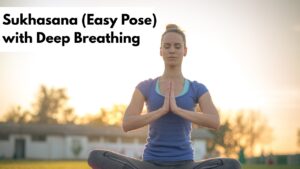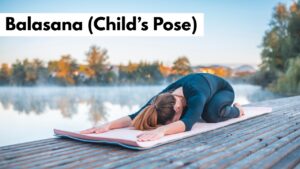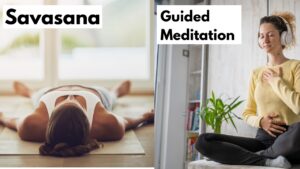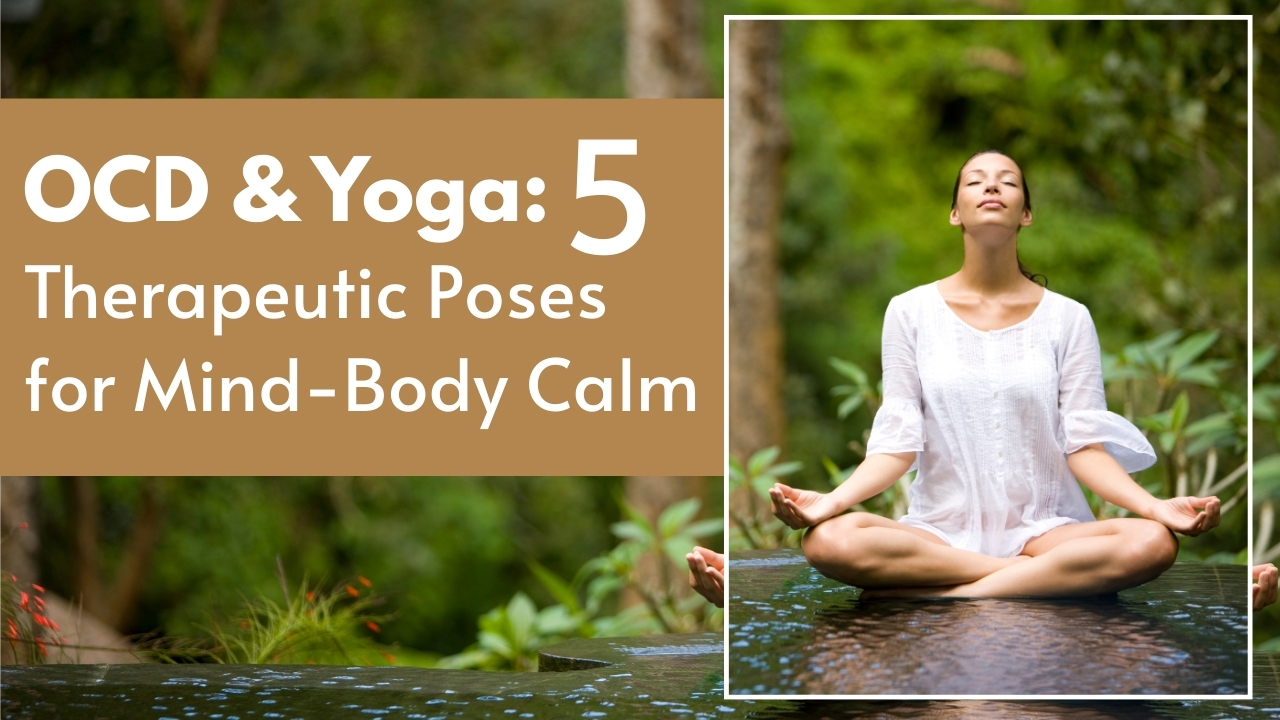Introduction
Constantly having anxious thoughts, doing the same things over and over, and having obsessive-compulsive disorder (OCD) can make daily life hard. A lot of people with OCD use therapy and medicine, but more and more people are looking to yoga as a natural way to calm the mind and get back in balance. Yoga not only helps with tension and anxiety, but it also makes you more aware, which makes it easier to deal with unwanted thoughts.
Here are five yoga poses that can help people with OCD. These poses consist of breathing, movement, and meditation to offer a complete way to calm your mind and build your inner strength.
Understanding OCD and Its Impact on Daily Life
A mental sickness called obsessive-compulsive disorder (OCD) affects millions of people around the world. People with this disorder have endless, evil thoughts (called urges) and a need to do the same things over and over again (called compulsions). These habits can make it hard to get along with other people, do well at work, and enjoy life in their daily life.
Common symptoms of OCD include:
- Fears or thoughts that won’t go away
- Doing the same thing over and over, like washing your hands and checking the same thing you have done once.
- More worry when habits are broken
- Having trouble focusing because of unwanted thoughts that break their concentration
Since stress and worry are often linked to OCD, dealing with these causes is a key part of getting better. Medical treatment and therapy are still the best ways to deal with OCD, but many people are also looking into natural treatments, such as yoga for mental health, as ways to help lower symptoms and get their lives back in balance.
Can Yoga Help with OCD? The Science Behind It
Yoga has long been recognised as more than exercise. It is a complete practice that keeps the mind and body in balance. Yoga poses, controlled breathing, and meditation activate the parasympathetic nervous system. This lowers stress and calms the mind, which is often restless in people with OCD.
The breathing techniques and mind that are part of yoga treatment for OCD are two of its most essential elements. People can learn to refocus their attention on a state of inner calm by practising techniques such as alternate nostril breathing or meditation while performing simple poses. Because of this observation, yoga for OCD is very good at breaking loops of worry and controlling behaviour.
Experts have also found that yoga is good for your mental health. Studies have shown that doing yoga regularly can lower cortisol (the stress hormone), make it easier to control your emotions, and make stress, anxiety, and OCD symptoms a lot better. Yoga is a natural way to improve strength and peace of mind that many people use in addition to traditional medical care.
5 Best Yoga Poses for OCD Relief
People who have OCD often feel stuck in cycles of worry, anxiety, and doing the same things over and over again. As a natural stop button, yoga can help you come back to the present moment by slowing down your thoughts.
The five yoga poses below can help individuals with OCD by combining movement, breathing, and awareness to calm the mind and reduce unwanted thoughts.
1. Sukhasana (Easy Pose) with Deep Breathing
By sitting with your legs crossed and your back straight is an easy but strong way to relax and become more aware. When used with breathing exercises for OCD, Sukhasana helps break up loops of obsessive ideas and makes you more aware of your own feelings.

2. Balasana (Child’s Pose)
For people with OCD, Balasana is one of the most relaxing yoga poses. If you fold forward and rest your face on the mat, you can feel more in control and release your emotions more easily. Especially beneficial for calming rushing thoughts and promoting a sense of safety and calm.

3. Viparita Karani (Legs Up the Wall Pose)
This healing pose calms the nervous system, relieves stress, and makes you feel less tired. Viparita Karani is a great yoga pose for relaxation and naturally helps alleviate anxiety and OCD symptoms, as it improves circulation and promotes a sense of calm.

4. Nadi Shodhana (Alternate Nostril Breathing)
As a powerful pranayama method, Nadi Shodhana clears your mind and makes both parts of your brain work together. This breathing exercise for OCD helps rid you of intense thought patterns and makes the mind clear and balanced.

5. Savasana (Corpse Pose) with Guided Meditation
Often done at the end of a yoga class, Savasana helps the body and mind relax completely. Adding a guided meditation to yoga treatment for OCD makes it more successful at helping people break free from their obsessive-compulsive cycles and find peace.

Success Stories: How People Found Calm Through Yoga
| Name / Profile | Their Challenge | How Yoga Helped | Outcome |
|---|---|---|---|
| Ananya, 28 (Student) | Struggled with intrusive thoughts before exams, leading to sleepless nights | Practiced Sukhasana with deep breathing daily as part of her study routine | Experienced better focus, reduced anxiety, and found yoga for OCD relief calming |
| Rahul, 35 (IT Professional) | Faced constant compulsions of checking and stress from long work hours | Adopted Nadi Shodhana (Alternate Nostril Breathing) and guided meditation | Felt more balanced, reported fewer compulsive urges, and improved emotional strength |
| Sophia, 41 (Homemaker) | Anxiety from repetitive cleaning rituals and worry about family safety | Practiced Balasana (Child’s Pose) and Viparita Karani (Legs Up the Wall) each evening | Found deep relaxation, better sleep, and described it as therapeutic yoga for OCD |
| Arjun, 50 (Entrepreneur) | Stress and OCD patterns worsened due to business pressures | Introduced Savasana with mindfulness meditation into daily routine | Gained inner calm, improved patience, and felt more in control of thoughts |
These stories tell us that even small steps in yoga can make a big difference. For anyone looking to slow down through practice, yoga can offer peace, focus, and freedom from distracting thoughts.
Additional Tips for Practicing Yoga with OCD
For people with OCD, yoga can be very helpful, but only if they do it regularly and in the right way. To help you get the most out of your practice, here are some useful tips:
- Regularly schedule short lessons every day. Mindful practice for just 10 to 20 minutes can help you focus, relax, and slowly get better in every lifestyle routine .
- In addition to professional care, good habits, and stress management techniques, you should also make changes to your lifestyle and do yoga and meditation.
- Relaxing tools, like soft background music, meditation apps, or breathing timers, can help you stay present and feel less nervous.
By following these tips, yoga becomes not just an exercise but a long-term yoga for OCD management and it is one of the most effective natural remedies for OCD.
Yoga vs. Medication – Can Yoga Replace Therapy for OCD?
| Aspect | Yoga for OCD | Medication/Therapy for OCD | Best Approach |
|---|---|---|---|
| Purpose | Provides relaxation, reduces stress, improves mindfulness | Targets brain chemistry, reduces intrusive thoughts and compulsions | Use yoga as supportive therapy alongside medical care |
| Effectiveness | Helps manage anxiety and obsessive thought patterns | Clinically proven to reduce OCD symptoms when prescribed and monitored | Combining both gives best results |
| Safety | Natural, no side effects, suitable for daily practice | May have side effects but often necessary for severe symptoms | Balance between natural remedies and medical support |
| Focus | Mind-body connection, emotional balance, stress reduction | Structured treatment: CBT, medication, therapy sessions | Integrating yoga into treatment enhances recovery |
| Long-Term Benefits | Builds resilience, mindfulness, and inner calm | Provides symptom control, prevents relapse with consistent care | A holistic approach: yoga + therapy/medication |
Important Reminder:
Yoga is a powerful practice for easing OCD symptoms, but it is not a replacement for medical treatment. For best results, combine yoga and therapy for OCD with professional guidance such as CBT or prescribed medication. This holistic approach ensures both emotional balance and long-term recovery.
Final Thoughts – Finding Calm Through Yoga
It can feel like your mind and feelings are always at odds when you have OCD, but yoga is a gentle, natural way to get back in balance. The breathing exercises and yoga poses for OCD in this guide are easy to follow, work well, and can be used by anyone, whether they are new to yoga or have been doing it for a while.
When you add yoga to your workout routine, you make room for more awareness, inner calm, and strength. Remember that regularity is very important—a few minutes a day can make a big difference.
With Pankaj Yogpeeth
Yoga is more than movement—it’s a pathway to healing and inner balance. At Pankaj Yogpeeth, we believe in the power of yoga to transform lives, whether you are seeking mental peace, emotional strength, or spiritual growth.
Begin your journey with yoga today and experience the difference in your mental clarity, peace, and overall well-being.

